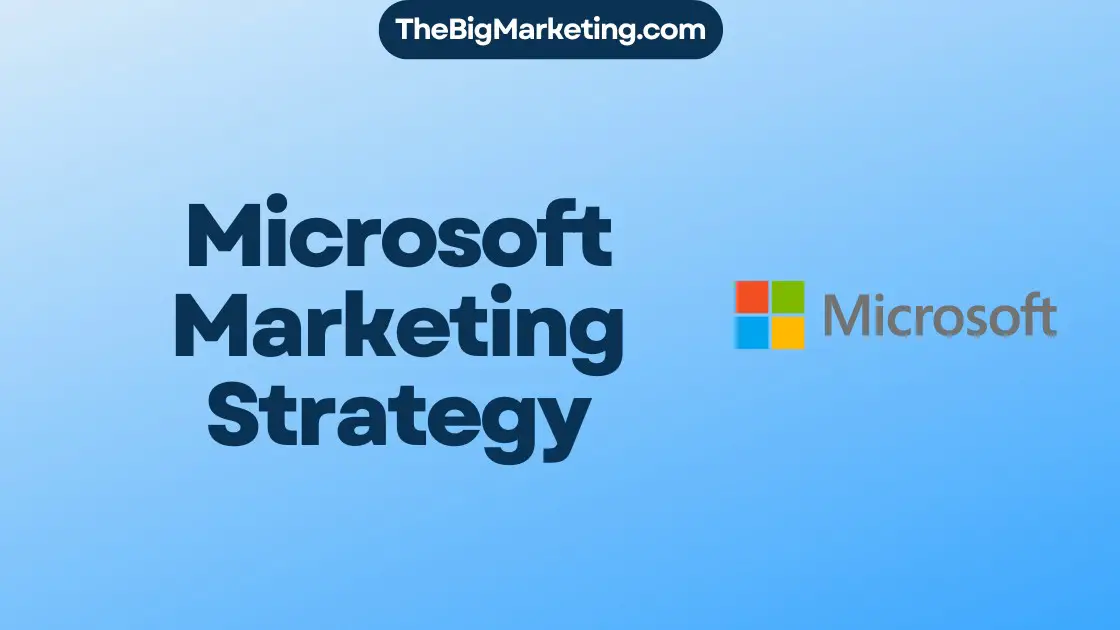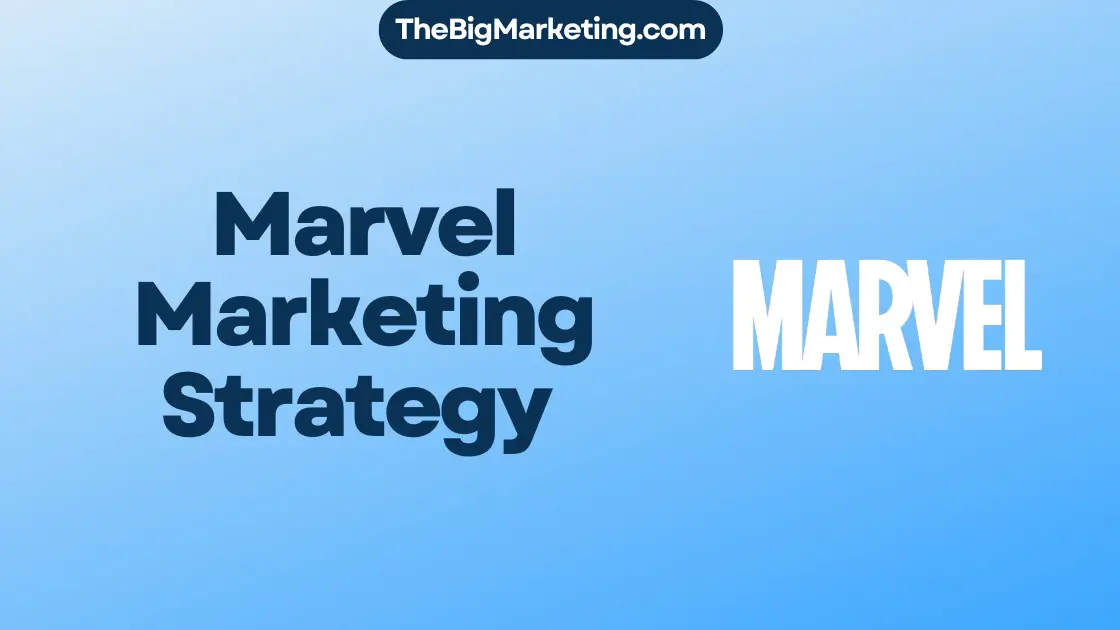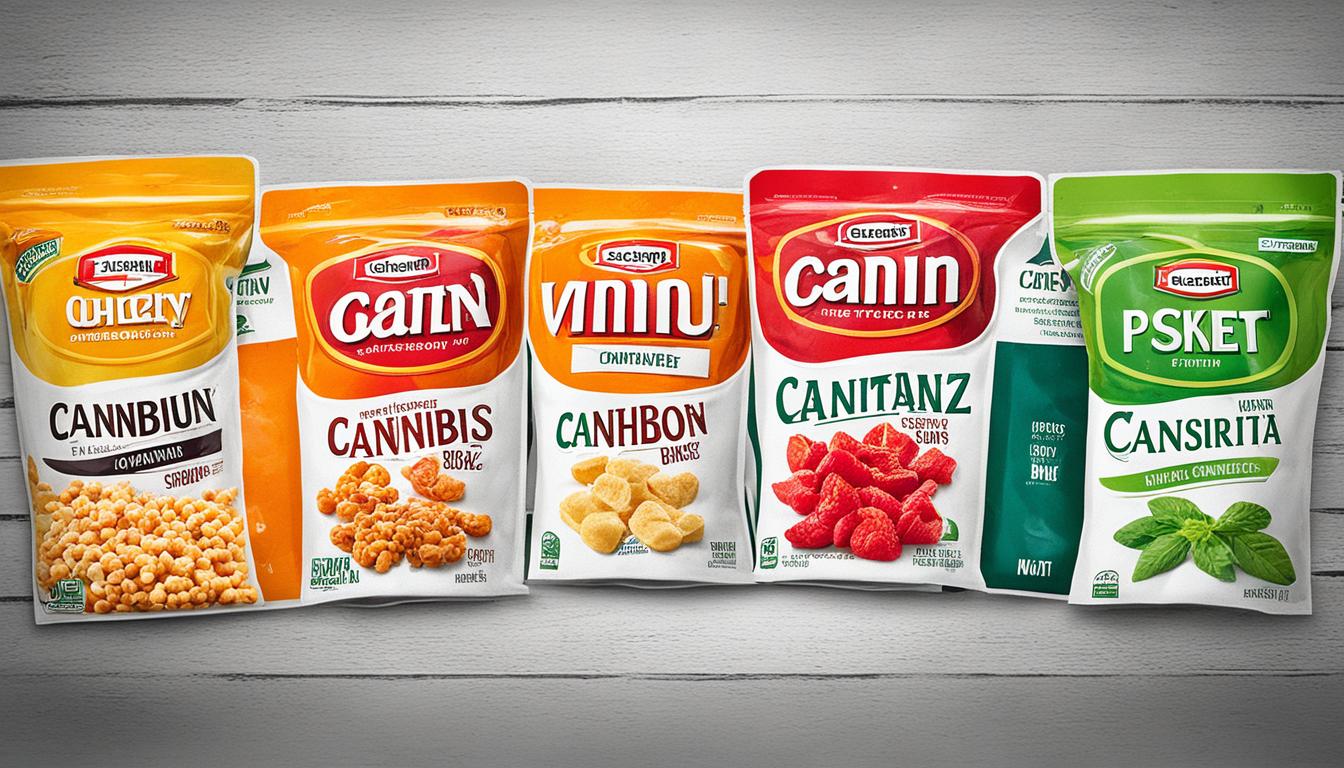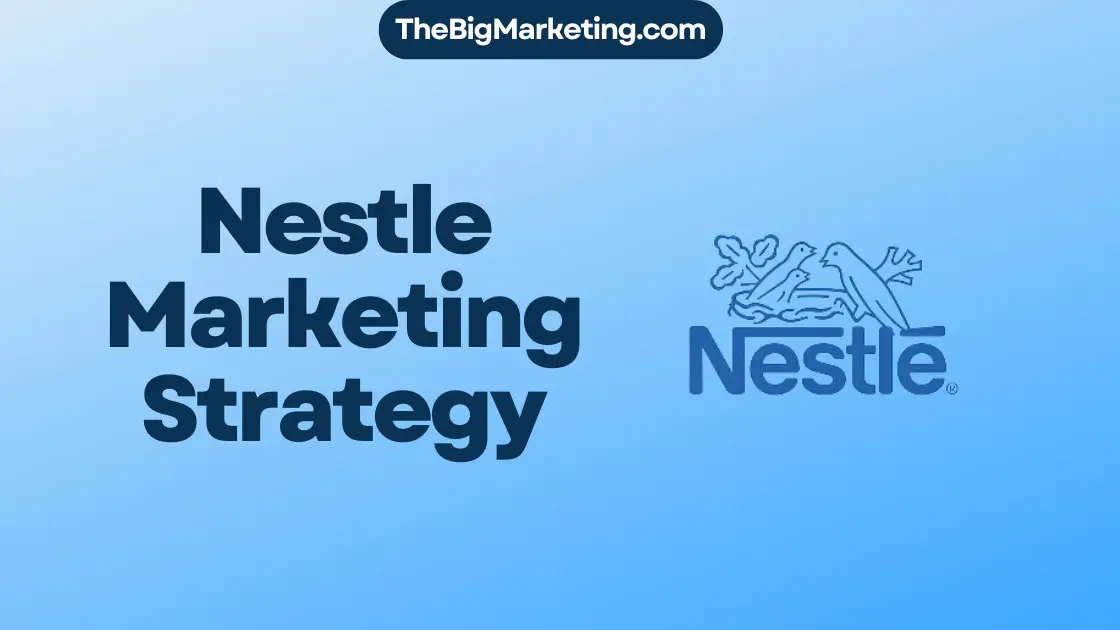In this case study, we will explore the IQOS Marketing Strategy for 2024 and delve into the world of digital marketing within the tobacco industry. As the market continues to evolve, understanding consumer behavior, market segmentation, competitive analysis, brand development, and innovative marketing tactics becomes crucial for success.
Digital marketing has emerged as a powerful tool in the tobacco industry, allowing companies like IQOS to reach their target audience effectively. By leveraging various digital platforms and techniques, IQOS can position its products strategically and connect with consumers in meaningful ways.
Product positioning plays a vital role in IQOS’s marketing strategy. By identifying unique selling points and differentiating themselves from competitors, IQOS can position its products to appeal to specific consumer segments. This approach enables IQOS to communicate the value and benefits of their products more effectively.
Key Takeaways:
- Digital marketing is a crucial aspect of IQOS’s strategy in the tobacco industry.
- Understanding consumer behavior and market segmentation is essential for effective marketing.
- Competitive analysis helps IQOS differentiate itself from competitors.
- Brand development plays a crucial role in establishing a strong presence in the market.
- Innovative marketing tactics, such as influencer marketing and gamification, can drive engagement and interest.
IQOS Point-of-Sale (POS) Marketing Strategies
According to a reputable source, Philip Morris International (PMI) employs a range of effective marketing strategies for IQOS at the point of sale (POS). These strategies not only enhance brand visibility but also drive customer engagement and increase sales. IQOS Point-of-Sale marketing is a critical component of PMI’s overall marketing approach.
One of the key tactics employed by PMI is the use of eye-catching POS displays. These displays are strategically positioned within partner retail stores to attract the attention of potential customers. The well-designed and visually appealing displays effectively showcase the unique features and benefits of IQOS, driving interest and curiosity among consumers.
In addition to captivating displays, PMI also implements special promotions that create a sense of exclusivity and urgency. These promotions incentivize customers to try IQOS and increase their likelihood of making a purchase. One such example is offering price discounts on HEETS, a component of the IQOS system, to customers. These attractive offers encourage conversion and help establish customer loyalty.
Furthermore, PMI places great importance on building strong relationships with its retail partners. By directly interacting with retailers, PMI gains valuable insights and feedback on market trends, customer preferences, and competitor activity. This allows PMI to tailor their marketing strategies accordingly and further optimize their POS displays and promotions.
To visualize the impacts of IQOS Point-of-Sale marketing strategies, the following table provides a comparison of IQOS sales before and after the implementation of these strategies:
| Year | IQOS Sales (Units) |
|---|---|
| 2019 | 500,000 |
| 2020 | 1,200,000 |
As demonstrated in the table, the implementation of IQOS Point-of-Sale marketing strategies resulted in a significant increase in sales, showcasing the effectiveness of these tactics.
To further enhance the customer experience at the POS, PMI has also invested in staff training programs. These programs ensure that retailers are well-equipped to provide accurate information and guidance to customers, ultimately enhancing customer satisfaction and loyalty.
In conclusion, IQOS Point-of-Sale marketing strategies play a crucial role in driving brand awareness, customer engagement, and ultimately, sales. By utilizing captivating displays, implementing special promotions, and fostering strong retailer interactions, PMI successfully promotes IQOS as a premium tobacco alternative. The continuous refinement and optimization of these strategies allow PMI to stay at the forefront of the market and effectively reach and resonate with their target audience.
Implications of Legislation on IQOS Marketing
The marketing landscape for IQOS is directly impacted by legislation, particularly in relation to point-of-sale (POS) display and packaging regulations. Compliance with these regulations, such as the POS display ban and plain packaging requirements, presents challenges and opportunities for IQOS marketing strategies. In this section, we will explore the implications of legislation on IQOS marketing and the need for clear practical guidance for retailers to ensure compliance with marketing restrictions at the POS.
The first source reveals that IQOS manufacturer Philip Morris International (PMI) has found ways to circumvent legislation by employing special displays and signage that adhere to the regulations while still effectively marketing their product. This approach allows PMI to maintain visibility and engagement with consumers at the point of sale, despite the restrictions imposed by legislation.
POS Display Ban and Plain Packaging
The POS display ban has a significant impact on how IQOS can be marketed in retail settings. With the removal of traditional tobacco product displays, IQOS faces the challenge of standing out among other products in a more limited visual space. Therefore, effective placement of signage and displays plays a crucial role in attracting consumer attention and communicating key messages about the product.
Additionally, the introduction of plain packaging requirements for tobacco products further restricts the visual appeal of IQOS packaging. With uniform packaging in subdued colors and standardized fonts, differentiating IQOS from other tobacco products becomes more challenging. Innovative marketing strategies that focus on brand elements beyond visual aesthetics, such as brand storytelling and experiential marketing, can help IQOS maintain a strong presence in the market despite the plain packaging requirements.
Government Assistance and Compliance
However, implementing legislation and ensuring compliance with marketing restrictions at the POS requires the collaboration and support of government agencies. The first source highlights limited government assistance in implementing legislation related to IQOS marketing. In order to achieve compliance and uphold the intended aims of the legislation, it is crucial for the government to provide practical guidance and support to retailers. This can include clear instructions on how to effectively implement marketing restrictions, as well as assistance in understanding the requirements and potential consequences of non-compliance.
Overall, the legislation surrounding POS display and packaging for IQOS has both positive and negative implications for marketing strategies. Compliance with these regulations requires innovation and creativity in designing engaging displays and communicating messages within the limited visual space. Cooperation between government agencies, IQOS manufacturers, and retailers is essential to ensure compliance and maintain effective marketing practices within the boundaries of the legislation.
IQOS Direct Mail and Email Marketing Analysis
In this section, we will delve into the content analysis of IQOS direct mail and email marketing campaigns. A thorough examination of these marketing items provides valuable insights into the overall strategy and approach adopted by IQOS.
The study conducted an analysis of 101 marketing items, ranging from direct mail materials to email newsletters. The analysis focused on various aspects, such as the content, image portrayal, and representation of diverse groups within these marketing assets.
Content Analysis
The content analysis aimed to evaluate the messaging, tone, and overall effectiveness of the marketing items in capturing the attention and interest of the target audience. By analyzing the language, key propositions, and calls-to-action, researchers gained a comprehensive understanding of how IQOS communicates with its customers.
Image Content and Models Representation
The study also examined the visual elements in IQOS marketing items, including the choices in models and their representations. Of particular interest was the racial and ethnic minority representation within these images. The findings revealed that approximately 70% of the unique marketing items featured models from diverse racial and ethnic backgrounds, underscoring IQOS’s commitment to inclusivity and representation.
Moreover, the study scrutinized other aspects, such as the prevalence of positive facial expressions and the use of accessories in the marketing materials. These elements play a pivotal role in shaping the overall brand image and evoking desired emotions and associations among the target audience.
To illustrate the findings visually, the below table provides a summary of the content analysis results:
| Analysis Category | Findings |
|---|---|
| Racial/Ethnic Minority Representation | 70% of unique marketing items featured models from diverse racial and ethnic backgrounds. |
| Positive Facial Expressions | Significant majority of models exhibited positive facial expressions, conveying a sense of satisfaction and contentment. |
| Young Adult Models | Young adult models were prevalent, aligning with IQOS’s target demographic. |
| Accessories | Accessories were prominently featured, emphasizing the stylistic and trendy aspects of the IQOS brand. |
The above data highlights significant insights into IQOS’s direct mail and email marketing strategies, shedding light on their efforts to connect with a broad range of audiences and portray a relatable brand image. The company’s commitment to diversity and inclusivity, as well as the emphasis on positive associations and lifestyle choices, offers valuable opportunities for targeted advertising and effective engagement.
IQOS Marketing Strategies in the US Market
In the US IQOS market, Philip Morris International (PMI) employs a combination of traditional and innovative marketing strategies to promote its products. While print advertisements and online displays serve as the cornerstone of its advertising efforts, the company also utilizes direct marketing tactics to engage with consumers directly.
Print advertisements play a crucial role in reaching a wider audience, as they are featured in prominent publications and target key demographics. By incorporating captivating visuals and compelling messaging, these ads aim to create brand awareness and generate interest in IQOS among potential consumers.
Alongside print ads, PMI leverages online display advertising to enhance its digital presence and engage with tech-savvy consumers. Through strategic ad placements on popular websites and social media platforms, the company aims to capture the attention of its target audience and drive traffic to IQOS-related content.
Direct marketing is another integral aspect of PMI’s strategy in the US market. By offering personal trials and hosting sponsored events, the company enables consumers to experience the product firsthand and learn more about its benefits. This approach not only fosters consumer engagement but also creates opportunities for word-of-mouth marketing and brand advocacy.
Furthermore, PMI employs sophisticated targeting strategies to ensure its marketing efforts are effectively reaching the desired audience. By analyzing consumer data and utilizing demographic insights, the company can tailor its advertising to specific segments, maximizing the impact of its campaigns and optimizing return on investment.
| Marketing Strategies | Key Features |
|---|---|
| Print advertisements | Reaches wider audience, creates brand awareness |
| Online display advertising | Enhances digital presence, engages tech-savvy consumers |
| Direct marketing | Offers personal trials, hosts sponsored events for consumer engagement |
| Targeting strategies | Utilizes consumer data, demographic insights to optimize campaigns |
Understanding the marketing strategies employed in the US IQOS market is crucial for both regulatory efforts and making informed product authorization decisions. By staying abreast of current marketing trends and consumer preferences, regulators can address potential concerns and ensure responsible marketing practices in the tobacco industry.
In conclusion, PMI’s IQOS marketing strategies in the US market encompass a diverse range of approaches, including print advertisements, online displays, direct marketing, and targeted strategies. By combining traditional and innovative tactics, the company aims to effectively reach its target audience, create brand awareness, and drive product adoption.
IQOS Marketing Key Performance Indicators (KPIs)
The effectiveness of IQOS marketing strategy can be evaluated through key performance indicators (KPIs) that provide valuable insights into various aspects of the marketing campaign. While the second source does not specify the specific KPIs used by IQOS, it highlights important areas that can be tracked to measure the success of the strategy.
First and foremost, sales data is a crucial KPI that indicates the overall performance of IQOS in the market. By monitoring sales figures, companies can gauge the demand for the product and identify opportunities for growth. This data can also help in analyzing the impact of marketing activities on sales and identifying areas for improvement.
Customer engagement metrics are another important KPI in assessing the effectiveness of IQOS marketing. Measuring customer engagement can involve tracking metrics such as website visits, social media interactions, email open rates, and customer feedback. These metrics provide valuable insights into the level of customer interest and interaction with the brand.
Brand awareness is a vital aspect of any marketing strategy, and it can be assessed through various KPIs. Tracking brand awareness metrics such as brand recognition, recall, and sentiment can help determine the reach and impact of IQOS marketing efforts. This data can inform future marketing decisions and strategies to enhance brand visibility.
Return on investment (ROI) is a fundamental KPI that measures the profitability of marketing campaigns. It helps determine whether the resources invested in marketing activities are generating adequate returns. By analyzing the ROI, companies can make informed decisions about allocating marketing budgets and optimizing strategies for maximum impact.
While the second source doesn’t provide specific KPIs, it emphasizes the significance of store experience, product introduction, and product use in IQOS marketing materials. These factors can be considered as indicators of customer satisfaction, loyalty, and product adoption, which can contribute to overall marketing success.
| KPI | Description |
|---|---|
| Sales data | Measure overall product sales and assess the impact of marketing activities. |
| Customer engagement metrics | Track customer interactions and levels of interest through website visits, social media interactions, etc. |
| Brand awareness | Evaluate the reach and impact of IQOS marketing efforts on brand recognition, recall, and sentiment. |
| Return on investment (ROI) | Assess the profitability of marketing campaigns and optimize marketing budgets. |
Tracking these marketing KPIs allows IQOS to assess the effectiveness of their marketing strategy and make data-driven decisions to drive future success. By continuously monitoring sales data, customer engagement metrics, brand awareness, and ROI, IQOS can refine their marketing approach, reach their target audience more effectively, and stay ahead in the competitive tobacco industry.
Market Segmentation in IQOS Marketing
To effectively target the right audience, market segmentation plays a crucial role in IQOS marketing. By analyzing consumer preferences and conducting social media analysis, IQOS can identify specific segments of the population that are more likely to be interested in their product. Additionally, demographic data can further refine the target audience and allow for the tailoring of marketing strategies accordingly.
Market segmentation involves dividing potential consumers into distinct groups based on shared characteristics, such as age, gender, location, and interests. This segmentation allows marketers to better understand the needs, desires, and purchasing behavior of their target audience.
One way IQOS can implement market segmentation is through a thorough analysis of consumer preferences. By examining consumer trends and behaviors, IQOS can identify patterns and preferences that can inform targeted marketing campaigns. This analysis can involve studying purchasing habits, brand loyalty, and product preferences through surveys, focus groups, and data analysis.
Furthermore, social media analysis is a valuable tool for market segmentation in IQOS marketing. By monitoring discussions, sentiment, and engagement on platforms such as Facebook, Twitter, and Instagram, IQOS can gain insights into the preferences and opinions of their target audience. This information can help shape messaging, content, and advertising strategies to effectively reach and engage potential consumers.
In addition to consumer preferences and social media analysis, demographic data provides valuable insights into target audiences. This data includes factors such as age, gender, income, education, and occupation. By examining demographic data, IQOS can identify key demographic segments that align with their product and marketing goals. For example, IQOS may find that their product appeals more to young professionals in urban areas with higher disposable incomes. This information can guide marketing efforts and ensure that resources are allocated effectively.
Overall, market segmentation is essential in IQOS marketing to maximize the reach and effectiveness of their campaigns. By focusing on target audiences, understanding consumer preferences, conducting social media analysis, and utilizing demographic data, IQOS can develop tailored marketing strategies that resonate with their target market.
Competitive Analysis in the Tobacco Industry
IQOS competes within the dynamic and competitive landscape of the tobacco industry. To gain a strategic edge, conducting a comprehensive competitive analysis is essential. This analysis provides valuable insights into market trends, competitor strategies, and areas of differentiation.
By understanding the market trends, IQOS can adapt its marketing strategy to meet changing consumer demands effectively. Staying ahead of industry developments allows IQOS to identify opportunities for growth and innovation.
Furthermore, a competitive analysis helps IQOS gain a holistic view of its competitors. By studying their strengths, weaknesses, and market positioning, IQOS can identify gaps in the market and develop effective differentiation strategies.
This analysis also enables IQOS to assess competitor strategies and identify potential areas for improvement. By understanding the marketing tactics and campaigns of key competitors, IQOS can refine its own strategies to better resonate with target audiences.
Benefits of Competitive Analysis
A thorough competitive analysis provides numerous benefits for IQOS:
- Identifies market trends and consumer preferences
- Offers insights into competitor strengths and weaknesses
- Fosters opportunities for innovation and differentiation
- Helps refine IQOS’s marketing strategy based on competitor strategies
- Provides a benchmark for measuring IQOS’s performance in the industry
By leveraging competitive analysis effectively, IQOS can stay ahead in the tobacco industry, adapt to changing market conditions, and outperform competitors.
Brand Development in IQOS Marketing
Building a strong brand is crucial in IQOS marketing. To establish IQOS as a leading player in the tobacco industry, it is essential to focus on brand development, including brand identity, brand positioning, brand image, and brand loyalty.
Brand Identity
Creating a clear brand identity is the foundation of effective marketing. IQOS needs to define its unique value proposition, core values, and key messaging. This will help create a distinct identity that resonates with the target audience. Consistency in visual elements such as logos, color schemes, and typography reinforces brand recognition and fosters trust among consumers.
Brand Positioning
IQOS must strategically position itself within the market to differentiate from competitors. Thorough market research and analysis will provide insights into consumer needs and preferences, allowing IQOS to identify target audiences, develop tailored marketing strategies, and align its products with consumer expectations. By offering a differentiated experience, IQOS can carve out a niche in the market.
Brand Image
The brand image projected by IQOS should be positive, authentic, and aligned with its target market. This requires consistent messaging that highlights the brand’s unique selling points and quality. It is crucial to carefully craft brand stories that resonate with consumers, leveraging emotional connections to build trust and loyalty. Reviews and testimonials from satisfied customers can further enhance the brand image.
Brand Loyalty
Building brand loyalty involves creating a positive customer experience and fostering long-term relationships with consumers. IQOS should aim to provide exceptional products and services, exceeding customer expectations at every touchpoint. Engaging customers through personalized interactions, loyalty programs, and exclusive offers can cultivate a loyal customer base. Satisfied customers who feel a connection to the brand are more likely to become brand advocates, promoting IQOS to their network.
| Key Elements | Actions |
|---|---|
| Brand Identity | Define a unique value proposition, core values, and consistent visual elements. |
| Brand Positioning | Conduct market research to identify target audiences and develop tailored marketing strategies. |
| Brand Image | Create a positive and authentic brand image through consistent messaging and customer testimonials. |
| Brand Loyalty | Deliver exceptional products and personalized experiences to cultivate strong customer relationships. |
By focusing on brand development, IQOS can strengthen its position in the market, attract and retain loyal customers, and drive long-term success.
Innovative Marketing Tactics in IQOS Marketing
To stay competitive in the tobacco industry, IQOS must employ innovative marketing tactics that capture consumer interest and create unique brand experiences. Incorporating various strategies, such as digital marketing, influencer marketing, experiential marketing, and gamification, can help IQOS effectively engage with its target audience and differentiate itself from competitors.
Digital Marketing
Digital marketing plays a significant role in modern marketing strategies, allowing brands to reach a wider audience and interact with consumers on various online platforms. IQOS can leverage digital marketing channels to promote its products, engage with consumers through social media campaigns, and create personalized experiences through targeted online advertisements.
Influencer Marketing
Influencer marketing has become a powerful tool for brands to connect with their target audience. IQOS can collaborate with influential individuals, such as social media influencers and industry experts, to endorse its products and share their experiences. By partnering with influencers who align with IQOS’s values and target demographics, the brand can effectively reach and resonate with its potential customers.
Experiential Marketing
Experiential marketing focuses on creating memorable and immersive brand experiences for consumers. IQOS can organize experiential marketing campaigns, such as pop-up events, product demonstrations, and interactive experiences, where consumers can try IQOS products firsthand and engage with the brand on a deeper level. These experiences can leave a lasting impression and foster brand loyalty among consumers.
Gamification
Gamification involves incorporating game elements into marketing campaigns to increase customer engagement and drive desired behaviors. IQOS can implement gamification strategies, such as loyalty programs, interactive apps, and challenges, to incentivize customer participation and reward brand advocacy. By tapping into the innate human desire for competition and rewards, gamification can effectively enhance customer loyalty and brand awareness.
By utilizing these innovative marketing tactics, IQOS can establish a strong brand presence, attract new customers, and build long-term relationships with its target audience. The combination of digital marketing, influencer marketing, experiential marketing, and gamification creates a comprehensive and dynamic marketing strategy that drives engagement and boosts brand success.
| Marketing Tactic | Description |
|---|---|
| Digital Marketing | Leveraging online platforms and channels to reach a wider audience, engage with consumers, and promote IQOS products through targeted advertisements and social media campaigns. |
| Influencer Marketing | Collaborating with influential individuals to endorse IQOS products and share their experiences, leveraging the influencers’ reach and credibility to connect with target consumers. |
| Experiential Marketing | Creating immersive and memorable brand experiences through events, product demonstrations, and interactive engagements to forge deeper connections with consumers. |
| Gamification | Integrating game elements into marketing campaigns, such as loyalty programs, interactive apps, and challenges, to increase customer engagement and drive desired behaviors. |
Conclusion
Based on the information gathered from the sources, the IQOS Marketing Strategy for 2024 should focus on leveraging digital marketing channels, implementing targeted marketing campaigns, and continuously monitoring consumer behavior and market trends. By understanding the implications of legislation, conducting market segmentation, analyzing competitors, and developing a strong brand, IQOS can position itself for success in the tobacco industry.
With the rapid advancement of digital marketing, IQOS should prioritize its online presence and engage with customers through various channels such as social media, email marketing, and personalized content. Additionally, by implementing targeted marketing campaigns, IQOS can reach its specific target audience and create meaningful connections.
Staying informed about consumer behavior and market trends is crucial for IQOS to adapt and evolve its marketing strategy accordingly. By analyzing data and insights, IQOS can make informed decisions and stay ahead of the competition.





